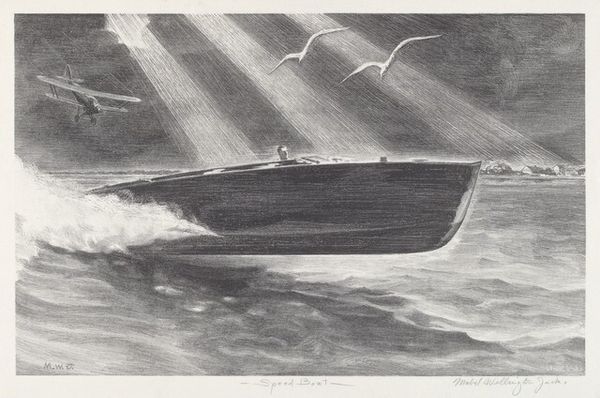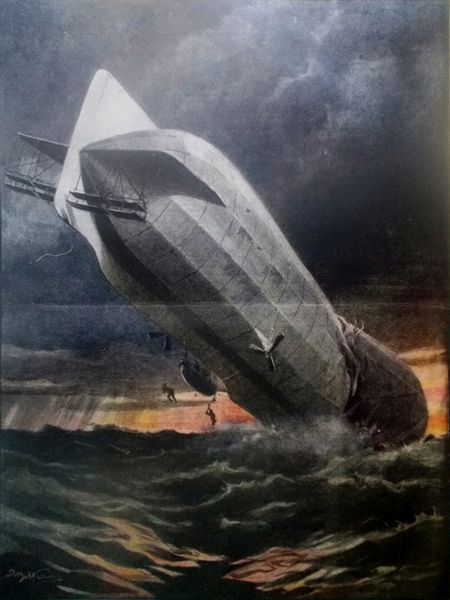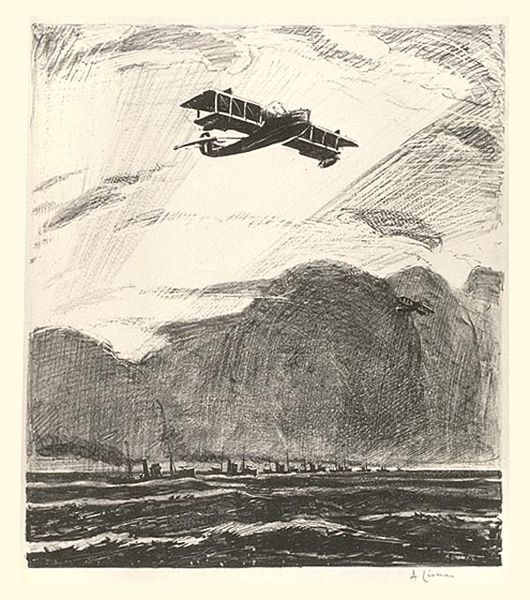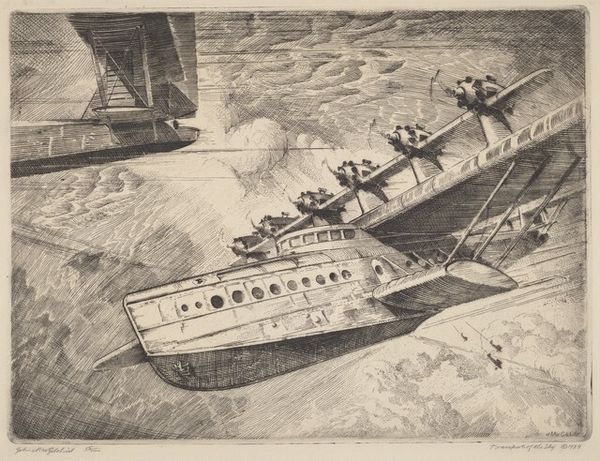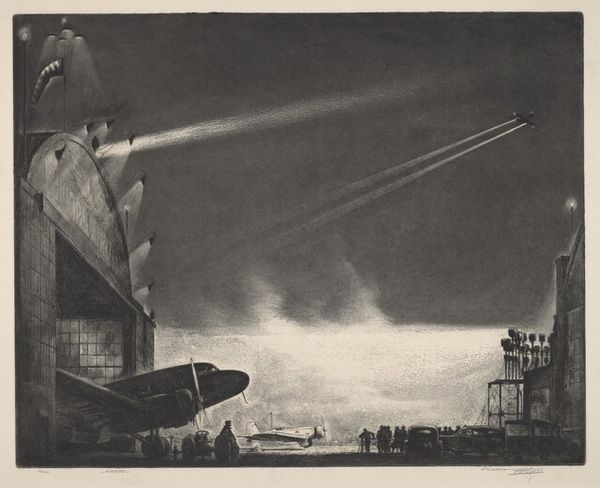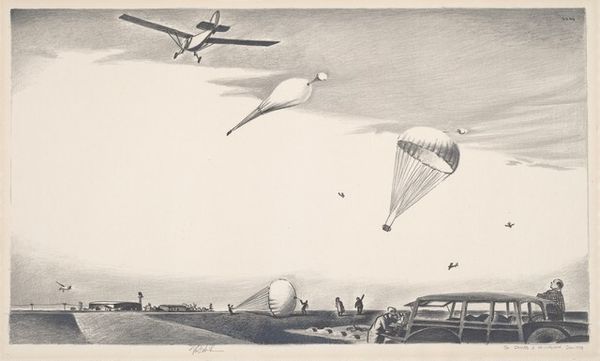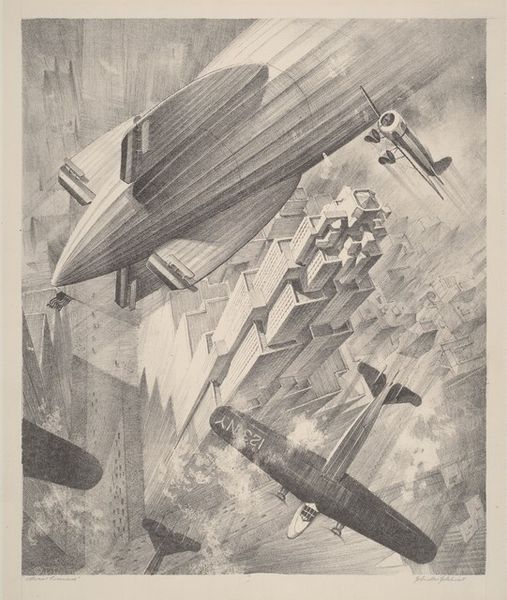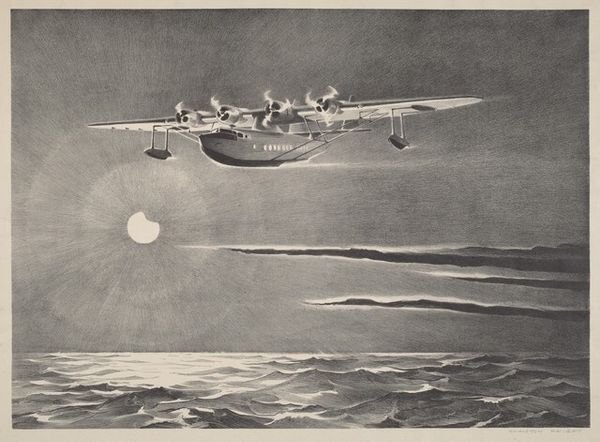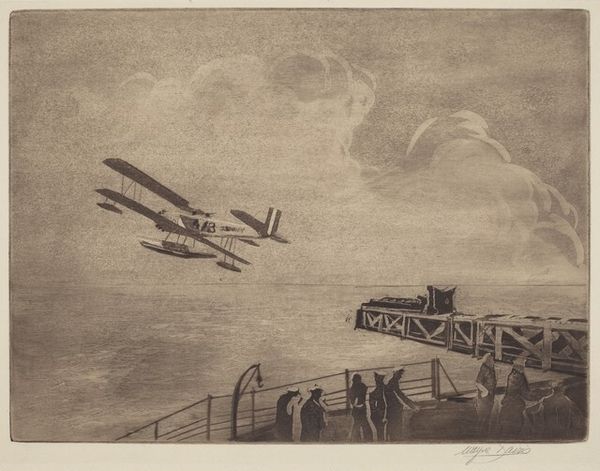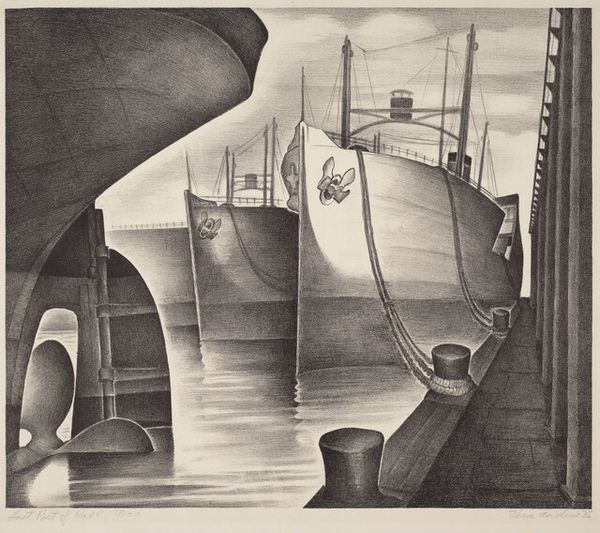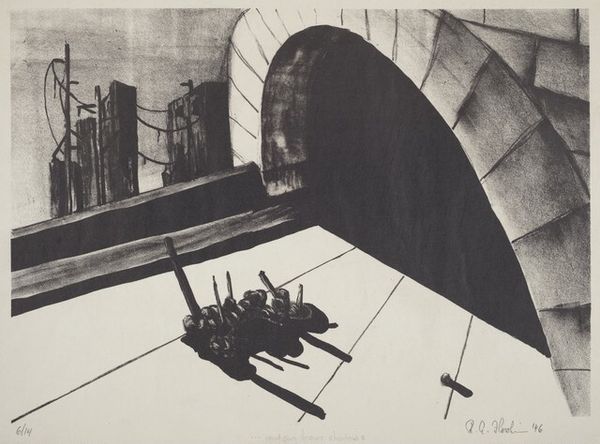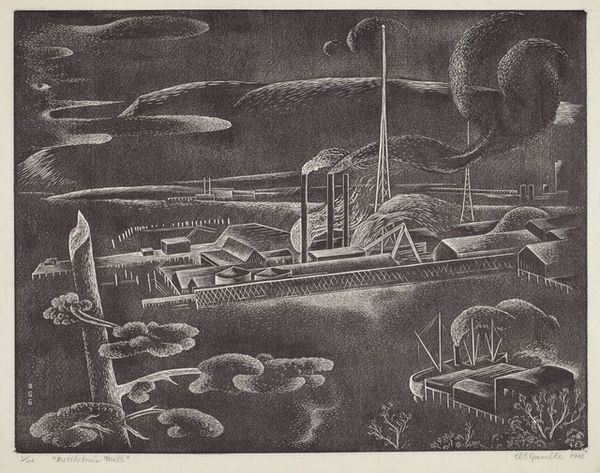
drawing, lithograph, print
#
precisionism
#
drawing
#
lithograph
# print
#
landscape
#
caricature
#
pencil drawing
#
geometric
#
surrealism
#
cityscape
#
modernism
Dimensions: plate: 22.5 × 30 cm (8 7/8 × 11 13/16 in.) sheet: 29.5 × 40.5 cm (11 5/8 × 15 15/16 in.)
Copyright: National Gallery of Art: CC0 1.0
Curator: This lithograph, "Los Angeles" created in 1931 by Howard Cook, really captures a moment in the development of the modern city. It depicts a massive airship dominating the sky, alongside the geometric forms of boats on the water. Editor: There's a haunting stillness in this piece, despite the subject matter being these large industrial structures. The monochromatic tones add to the dramatic tension—like something out of a premonitory dream. Curator: Let’s think about the context. Cook made this during a fascinating period of urban expansion and technological advancement. The airship itself would have represented progress and the Navy’s power. How were these advancements made possible through labor, the acquisition of material, and so on? Editor: Exactly. Consider also the Depression-era anxieties simmering beneath the surface. The heroic scale of the airship seems to almost mock the figures in the small boat below, reflecting the social and economic disparities of the time. The Navy, especially after the First World War, increasingly represented militarization. The scale is almost propaganda! Curator: Absolutely, the printmaking process itself is key to understanding this artwork. Lithography allowed for relatively quick production and distribution of images. This artwork would be a multiple and this enables widespread consumption. Who owned them and how might we research that in order to contextualize the politics? Editor: And the question is, how would that affect popular perception and reception of these rapidly shifting dynamics within Los Angeles. Was it aspirational, or foreboding? How would it circulate in public spaces and galleries to cement this image of power? Curator: Looking at Cook's treatment of the water and sky—it’s almost romantic in contrast to the hard edges of the industrial elements. I mean, just looking at that water! We could look to understand the cost of creating such an artwork – perhaps its worth during the Great Depression might help unlock understanding about its material consumption, or perhaps the type of printing press required. Editor: I agree, I find that tension really compelling. It reminds me that art isn't just reflecting social forces but actively shaping them, even back then. And with this final print here for us to view today, that dialogue can continue into our own era!
Comments
No comments
Be the first to comment and join the conversation on the ultimate creative platform.
